Greece › Athens › Archaeological Sites › Kerameikos
By Santorini Dave
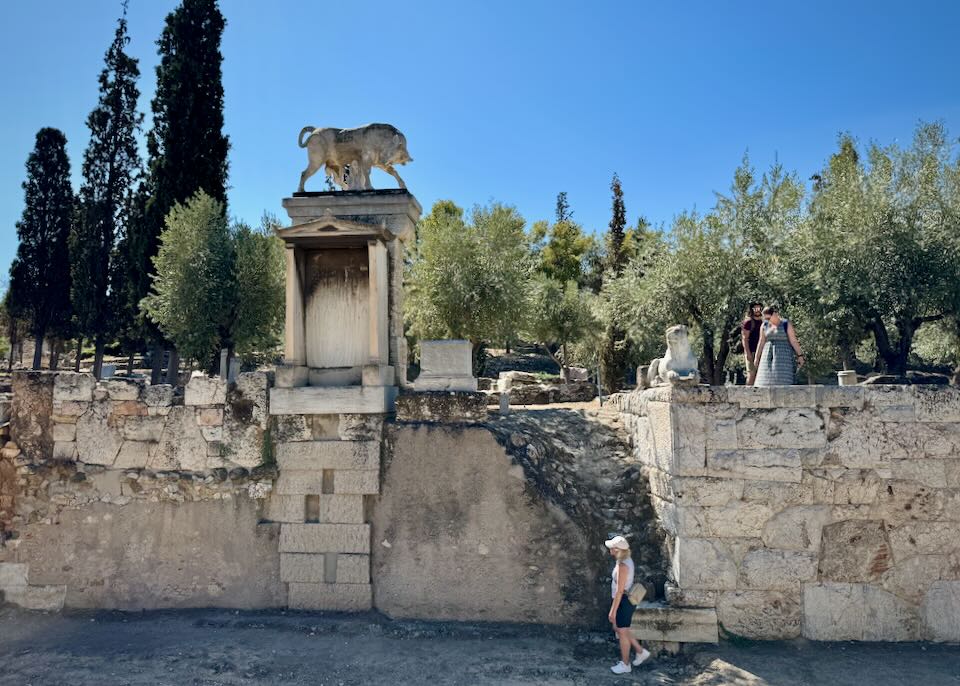
The Kerameikos Archaeological Site in Athens is one of the city’s most historically rich and underrated ancient areas. It’s also far less crowded than other major sites like the Acropolis, making for a peaceful and contemplative experience.
See Also
Tours & Tickets:
• Athens Pass Combo Ticket (7 archaeological sites + Acropolis Museum.
• Daily Life in Ancient Athens (private tour of Kerameikos, Ancient Agora, Roman Agora, Monastiraki & Plaka neighborhoods)Kerameikos Hours and Information
- Hours: Open daily. Summer (April to October) 8am – 7pm; last entrance to the site at 6:30pm. Winter (November to March) 8am – 3pm; last entrance to the site at 2:30pm. Closed January 1, March 25, May 1, Orthodox Easter Sunday, December 25 & 26.
- Website: odysseus.culture.gr
- Location: Ermou 148, Athens
- Telephone: +30 210 3463552
- Admission Fee: Summer (April to October) entrance fee: 8€. Winter (November to March) entrance fee: 4€. Reduced admission 4€. You can also purchase a 30€ combo ticket for this and 6 additional sites: Acropolis, Ancient Agora of Athens, Hadrian’s Library, Temple of Olympian Zeus, Kerameikos and Aristotle’s Lyceum. The combo ticket is valid for 5 days and offered year round. Tickets can be purchased on site or in advance online.
- Free Entry: March 6 (in memory of Melina Mercouri), April 18 (International Monuments Day), May 18 (International Museums Day), the last weekend of September annually (European Heritage Days), October 28, every first Sunday of the month from November 1st to March 31st.
- Parking: No parking lot. The nearest parking areas are east of the site near Thiseio metro station, or west of the site in the neighborhood of Gazi around Pireos Ave.
- Nearest Metro: Thiseio, Kerameikos.
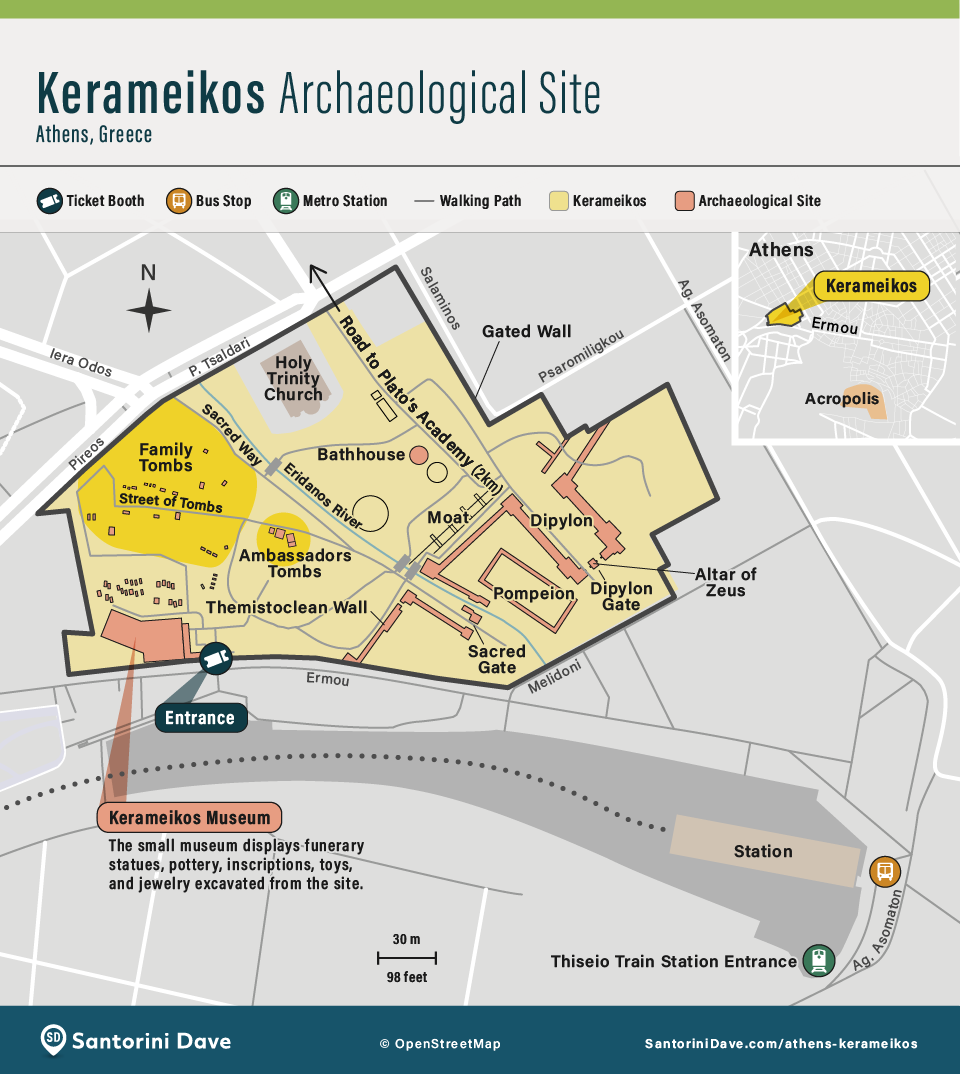
Kerameikos Archaeological Site in Athens
- The Kerameikos Archaeological Site in Athens is one of the city’s most historically rich and underrated ancient areas. It is usually far less crowded than other major sites like the Acropolis. In the summer, we recommend visiting in morning or late afternoon, as shade is limited.
- In ancient times, Kerameikos served as the city’s potters’ quarter, home to the potters, vase painters, and kilns that produced Attic pottery. (The term “Ceramic” comes directly from Kerameikos.) Potters were first attracted to the area by the clay deposits provided by the Eridanos river that runs through the site.
- Due to continuous overflow of the river, the area was converted to a burial site, eventually becoming the primary cemetery of ancient Athens. Kerameikos’ oldest tombs date from the Early Bronze Age (2700-2000 BC), and the cemetery was used until the Early Christian period (338 BC until approximately the sixth century AD). During the Classical period of the fifth-fourth centuries BC, funerary steles, statues, and decoratively-carved family monuments lined the streets.
Ancient grave statuary of Demetria and Pamphile (Ca. 325-310 BC) in the Kerameikos Museum. Kerameikos’ steles and statuary date back to the 5th century BCE and provide important insight into ancient Athenian beliefs about death, family, and status.
- The site spreads across about ten acres that include part of the Themistoclean Wall, the Dipylon and Sacred Gates, the Pompeion, the road to Plato’s Academy, the burial enclosure of the Stele of Hegeso, and other well-known monuments. The Dipylon Gate was Athens’ largest entrance and the starting point of the Panathenaic procession to the Acropolis; the nearby Pompeion was used for procession preparations. The Sacred Gate was the starting point for the procession to Eleusis for the Eleusinian Mysteries, one of the most important religious festivals in ancient Greece.
- Rediscovered and excavated in the 19th and 20th centuries, Kerameikos remains an active archaeological site, with work ongoing by the German Archaeological Institute.
- A small but excellent museum on site houses many of the artifacts excavated from the site—funerary statues, pottery, inscriptions, and even toys and jewelry.

Kerameikos is one of Athens most important, yet overlooked, archaeological sites.
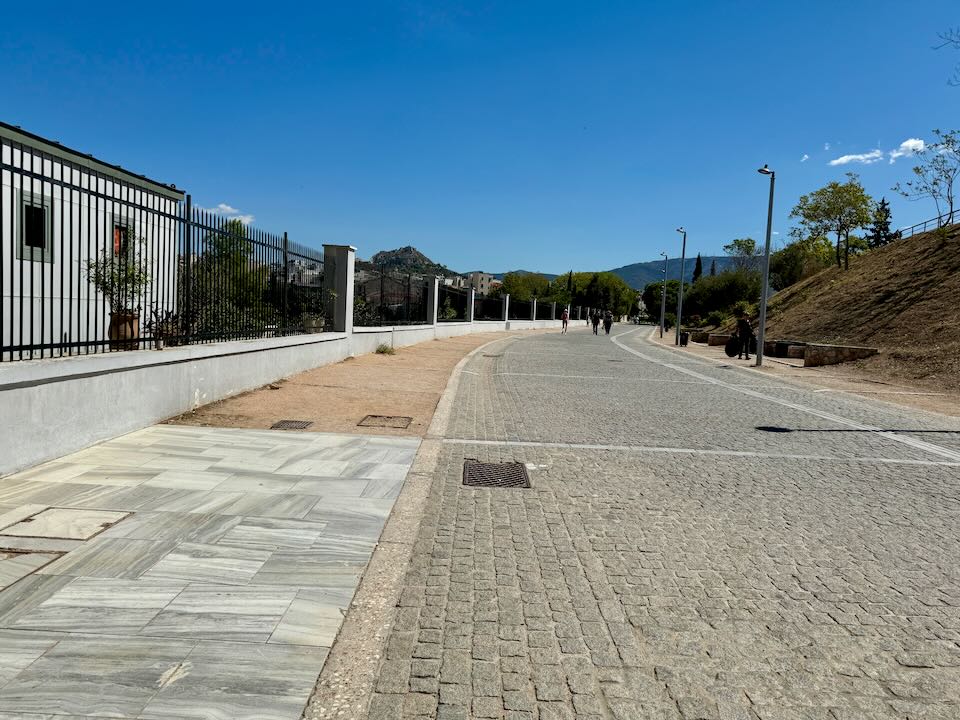
It is easily accessed from the tourist center via a wide, level, and mostly unshaded pedestrian-only section of Ermou street that stretches west from the Thiseio metro station (5-minute walk).
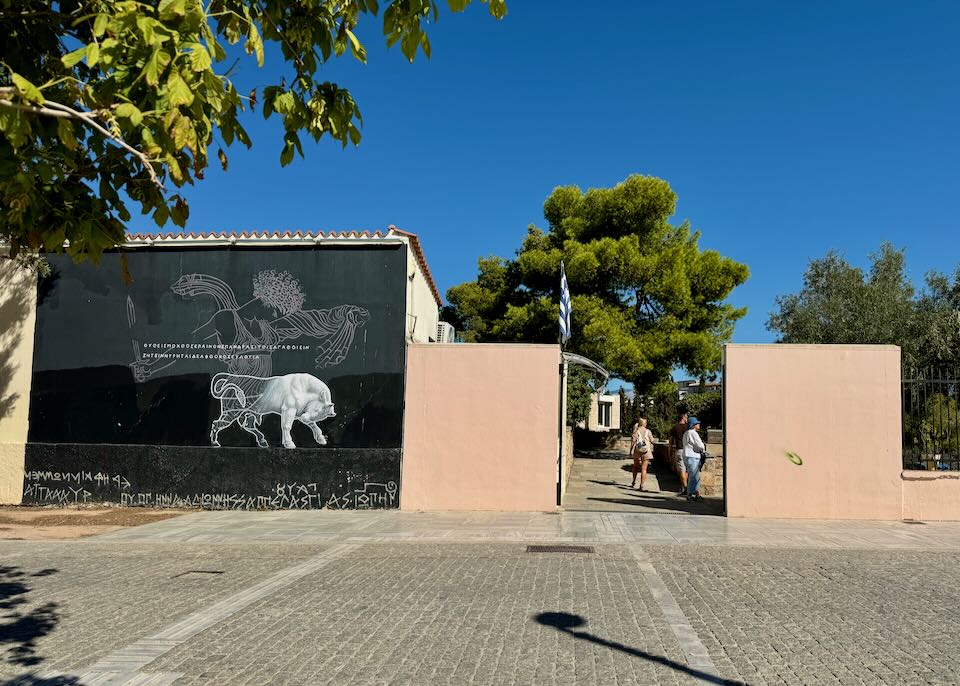
The site is open daily, with abbreviated hours in the winter months.
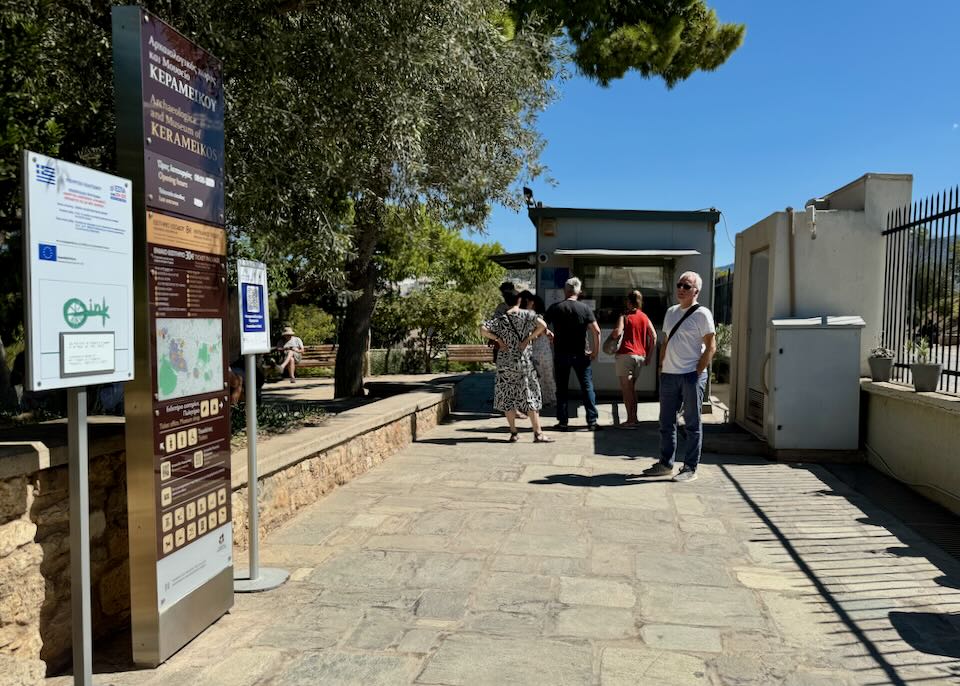
Visitors can access the site by purchasing either single use tickets or 5-day combo tickets that also include Acropolis, Ancient Agora of Athens, Hadrian’s Library, Temple of Olympian Zeus, and Aristotle’s Lyceum.
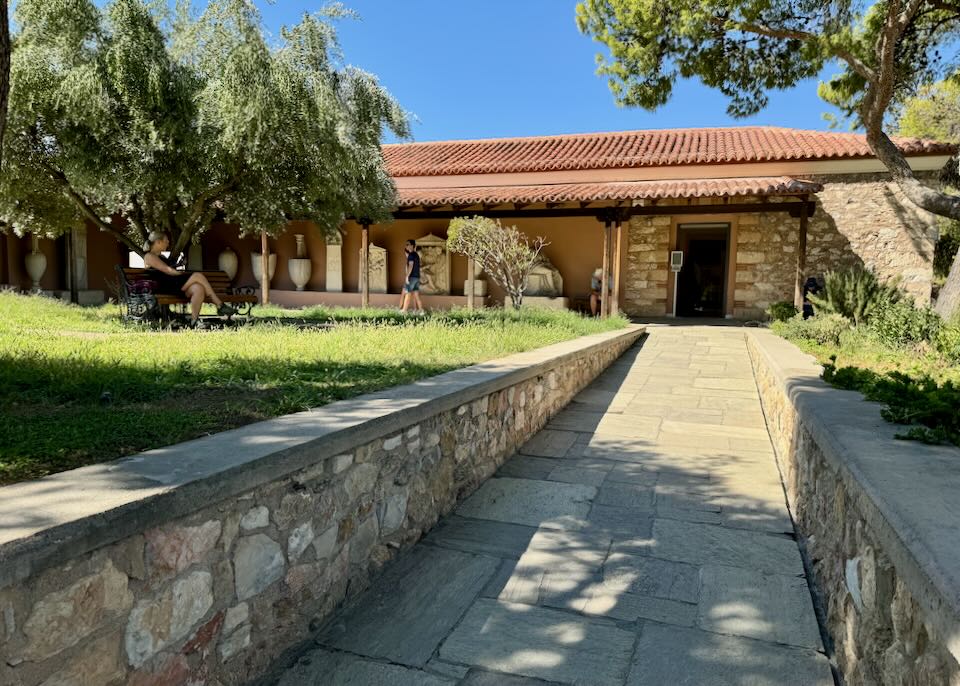
A small but impressive museum houses statuary and artifacts from the site. It’s a good idea to visit this first to get a feel for the history before setting out to explore the grounds.
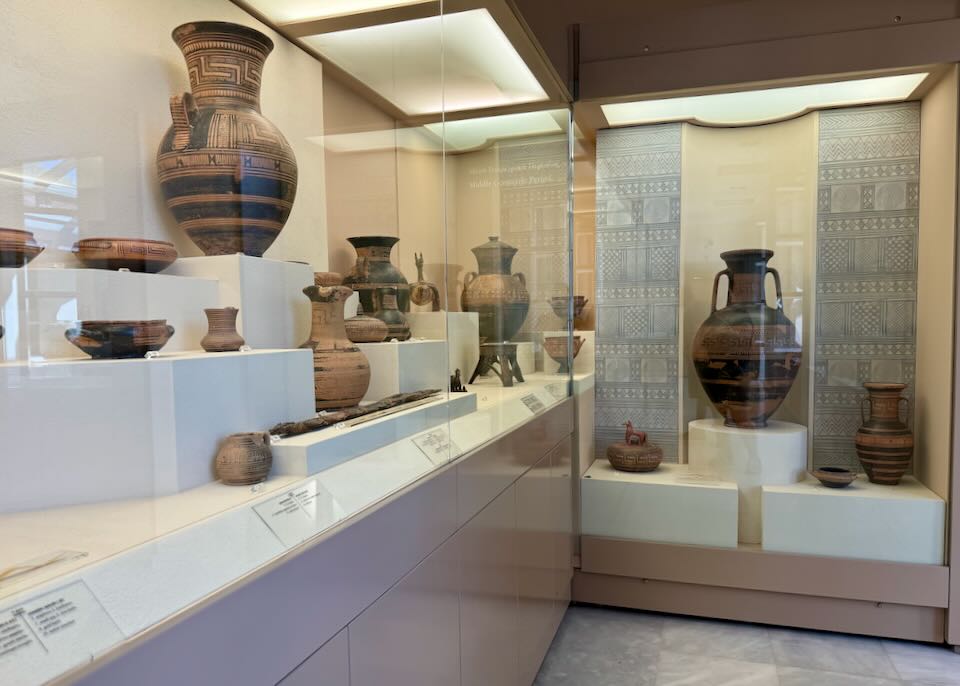
The collection includes pottery and artifacts found within the cemetery during excavation…
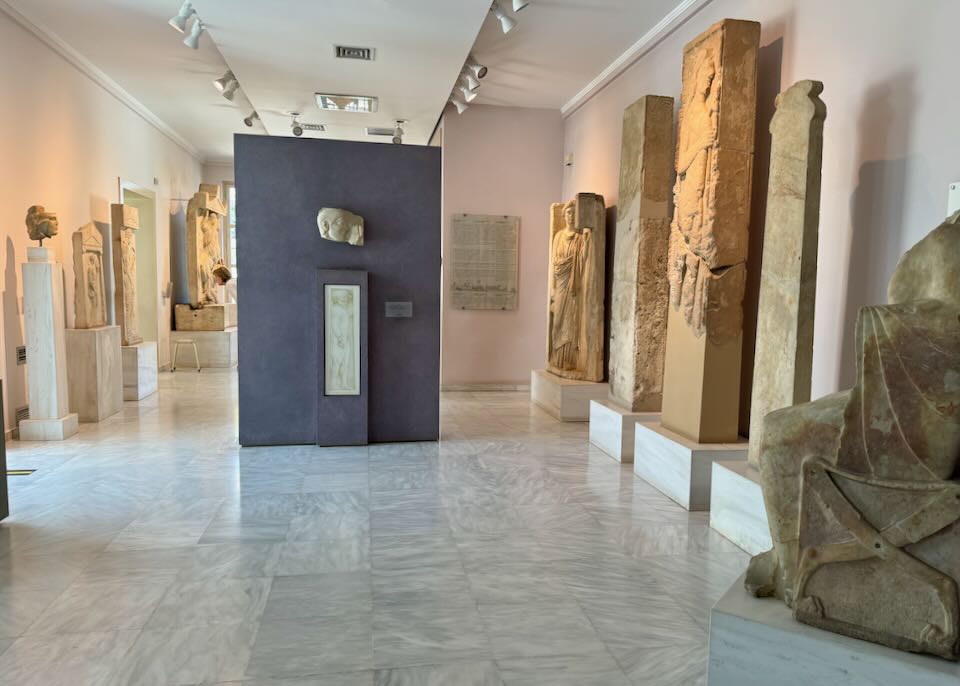
…as well as steles and statuary that marked the ancient gravesites.
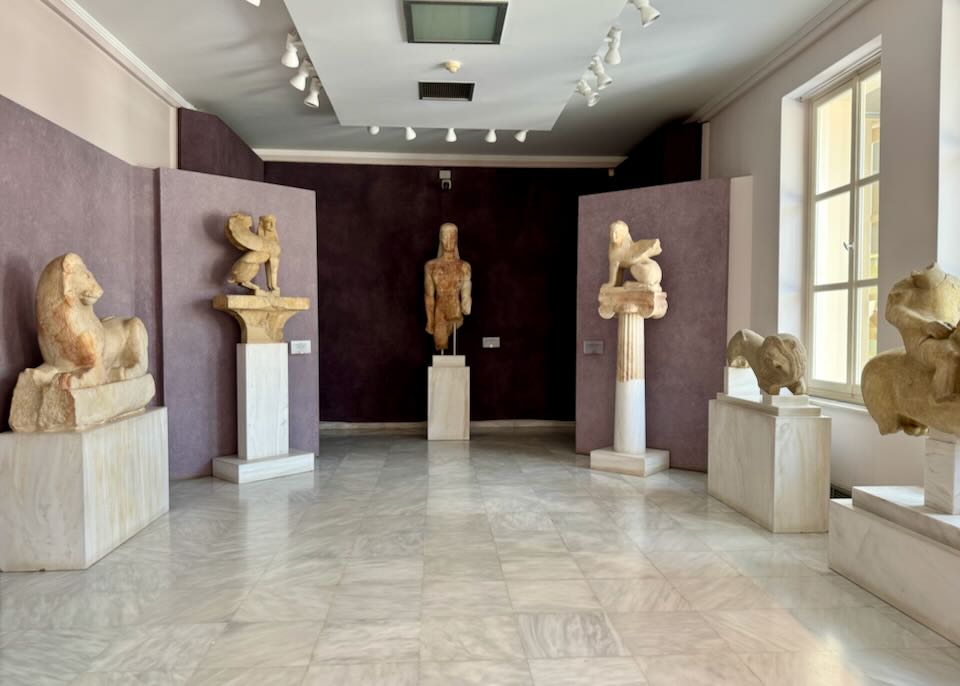
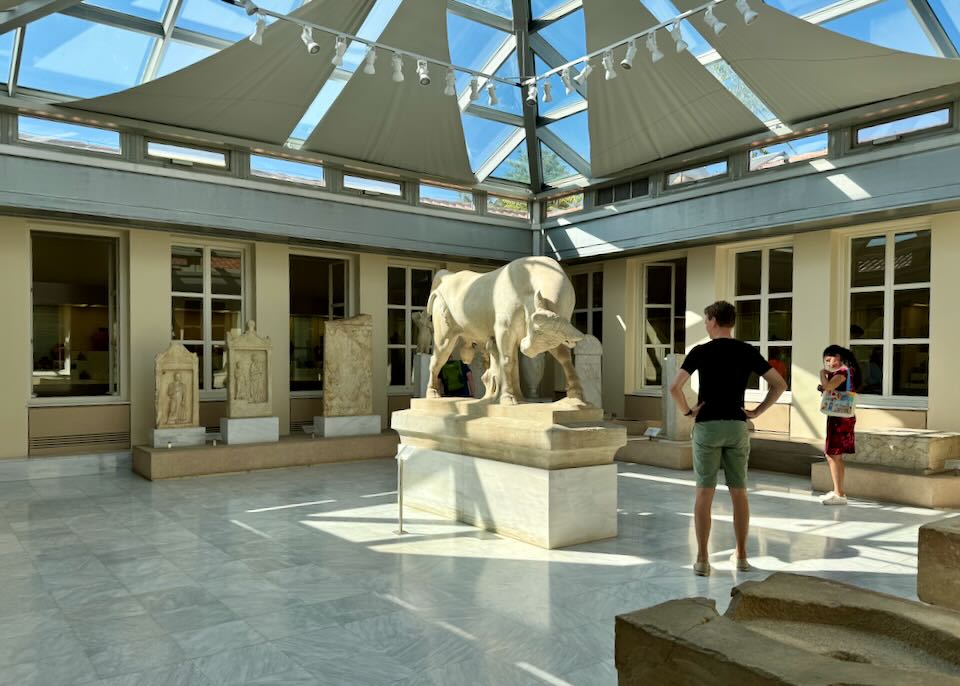
The site’s authentic statuary (like the iconic Bull from the grave enclosure of Dionysios of Kollytos) has been moved inside to protect it from the elements; the statues seen outside on the grounds are reproductions.
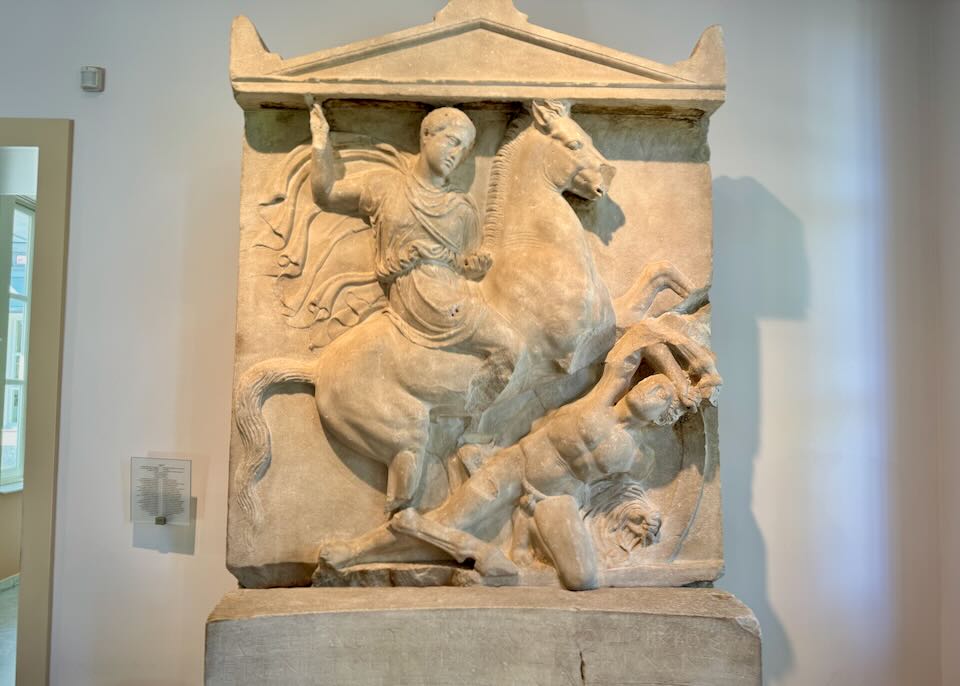
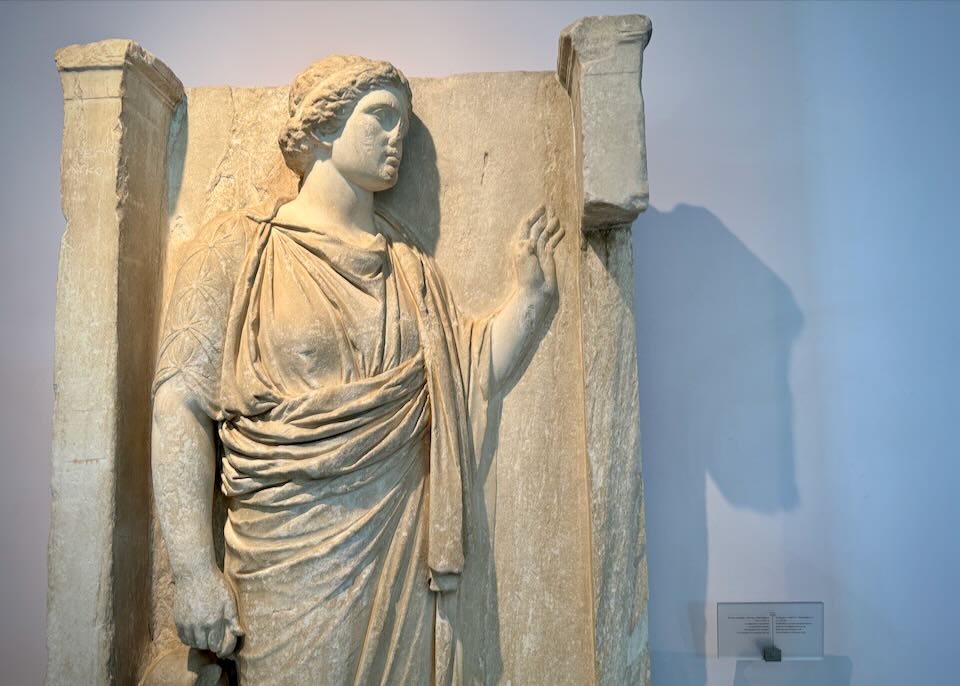
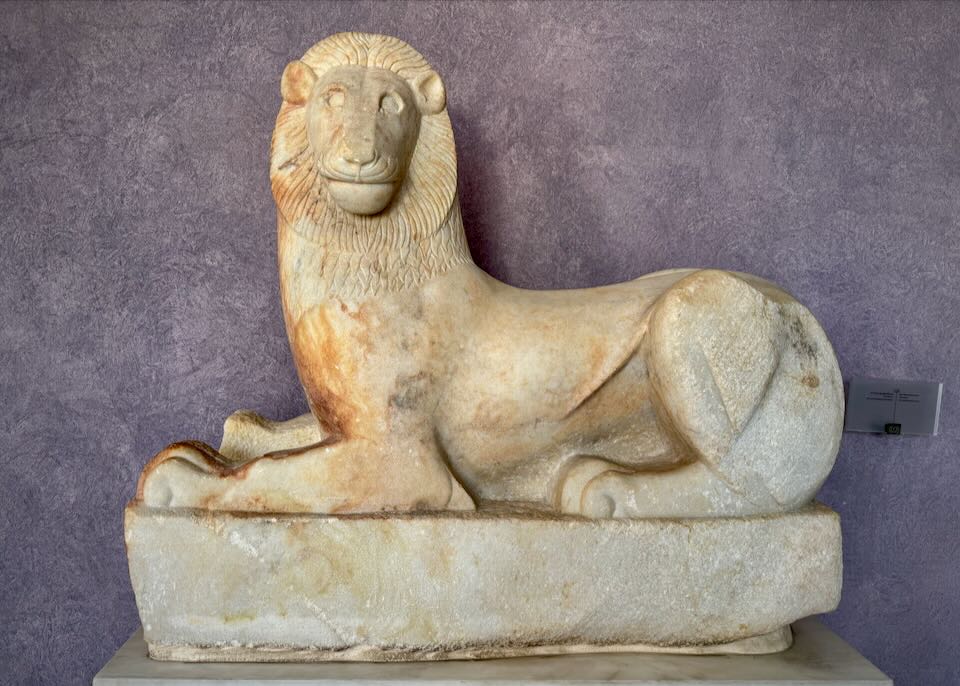
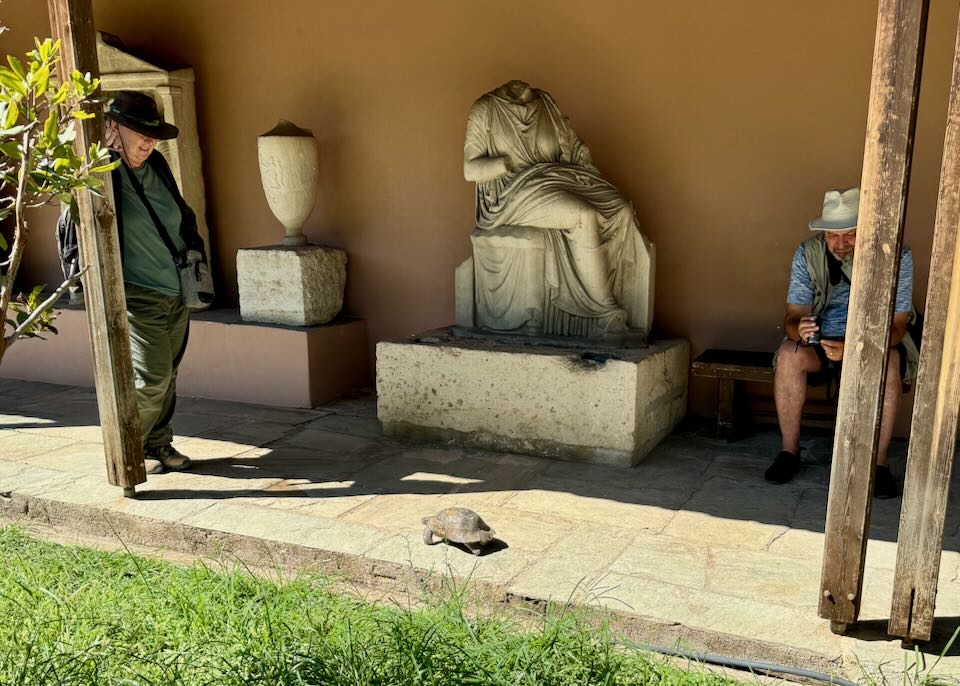
Some of the authentic statuary is outside the museum, but undercover. (And there are tortoises roaming about.)

A collection of columnar grave markers, called kionsikoi, outside the museum.

The site’s most impressive statuary is found along what’s now known as the “Street of Tombs,” which is adjacent to the Sacred Way.
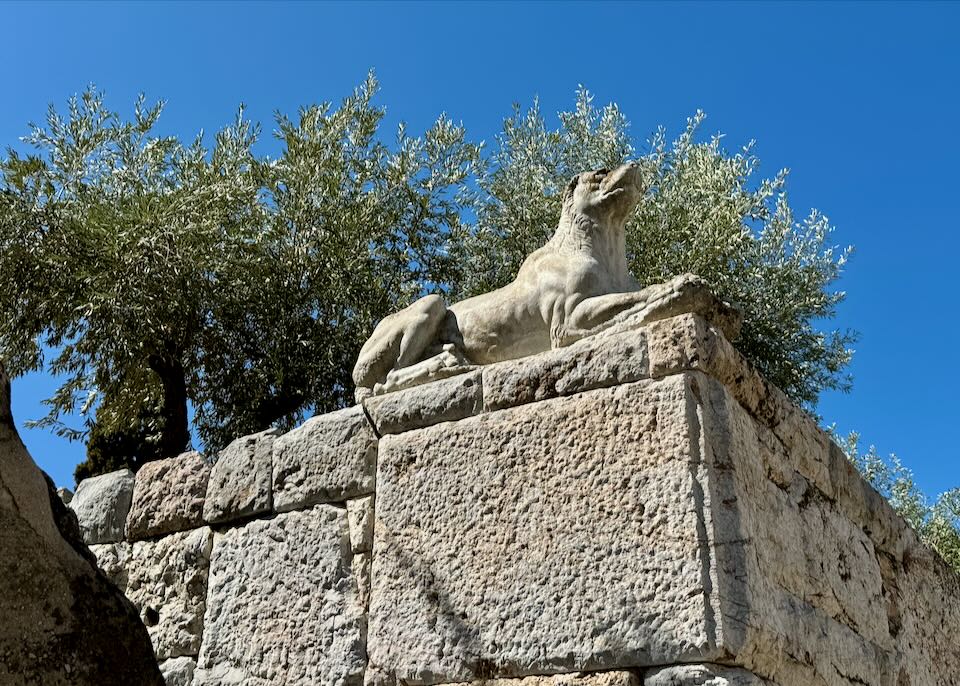
Even the ancient Greeks appreciated a good dog.
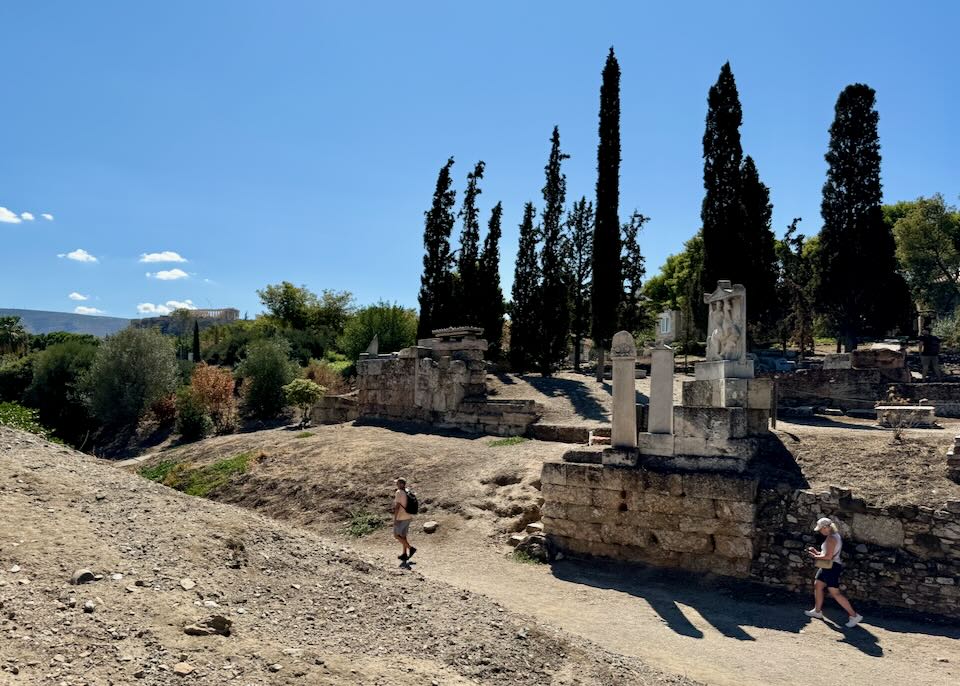
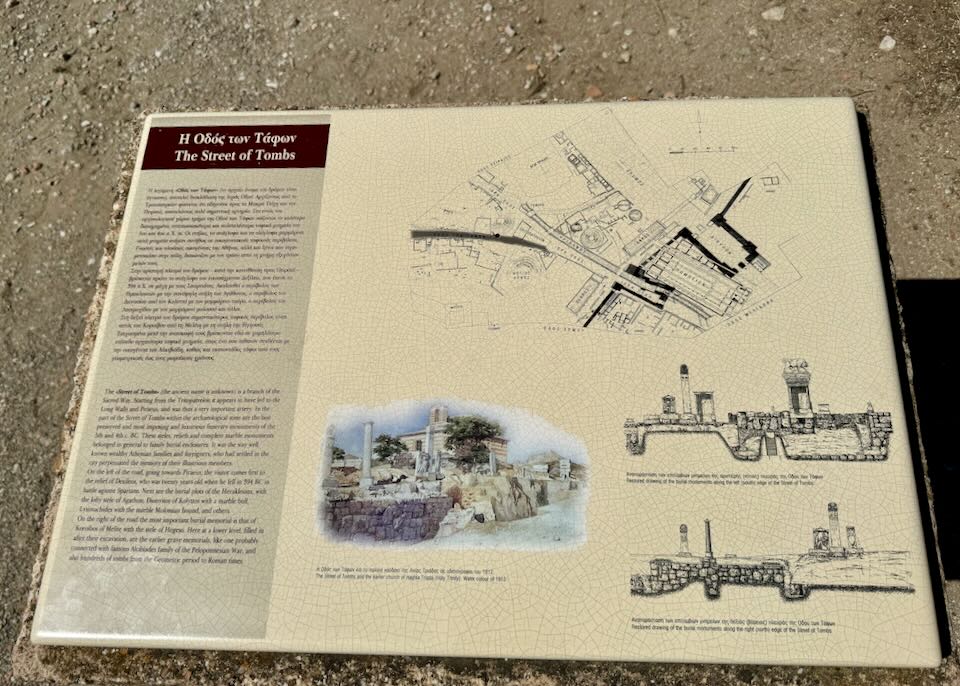
Helpful signage is offered around the site in Greek and English.
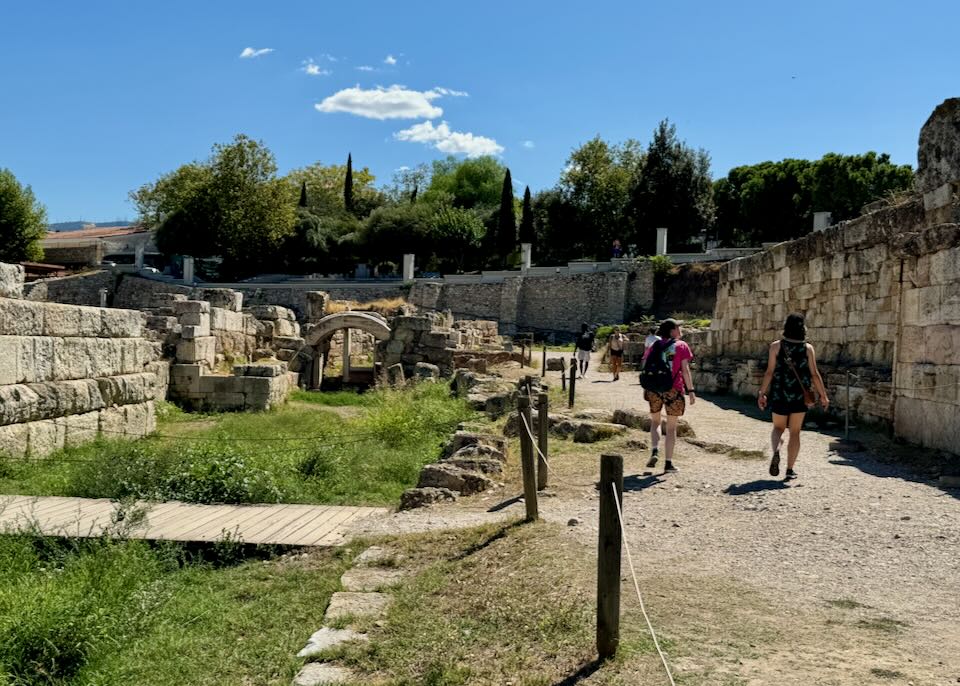
This section of the Sacred Way runs along the Eridanos river (now very small), which once supplied clay for the city’s pottery.
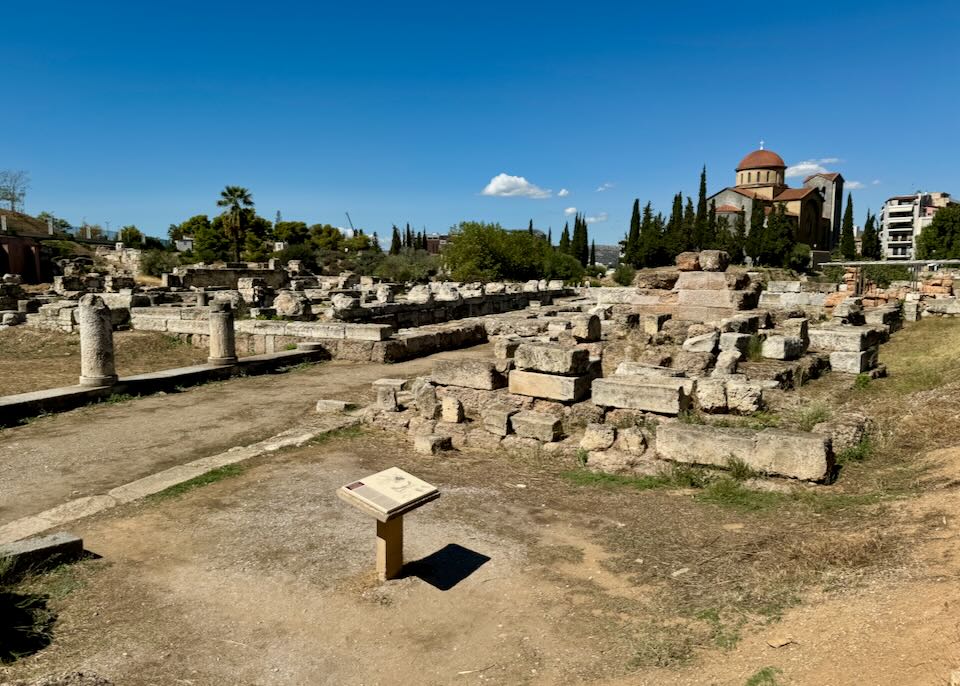
The ruins of the Pompeion, where preparations and sacrificial feasts were held by Athenian nobility before the the Panathenaic Festival procession in honor of Athena.
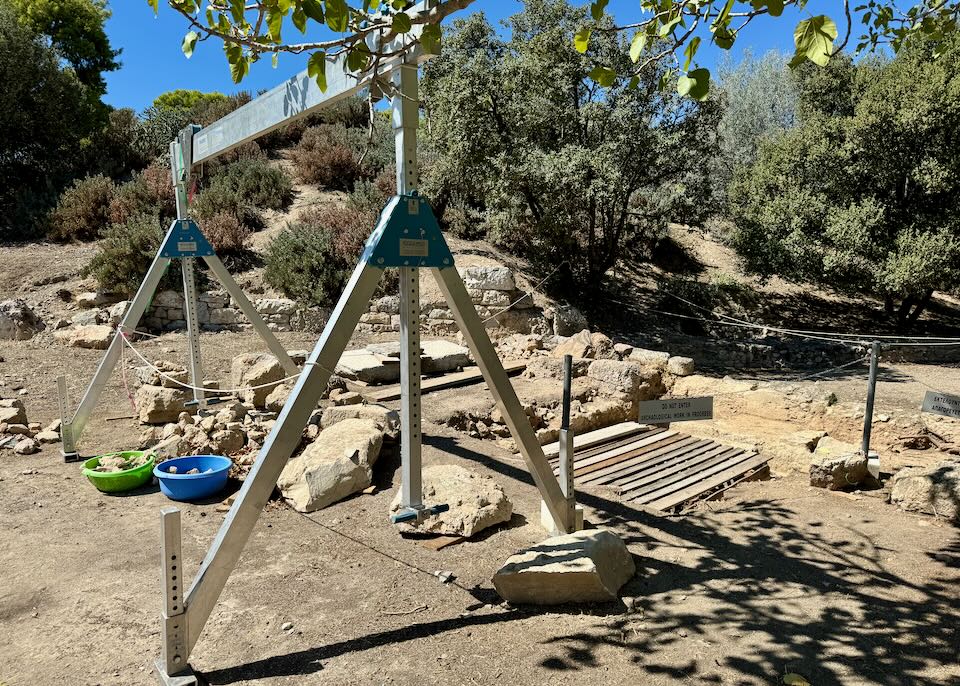
Kerameikos is still an active dig site, with work intermittently ongoing by the German Archaeological Institute.
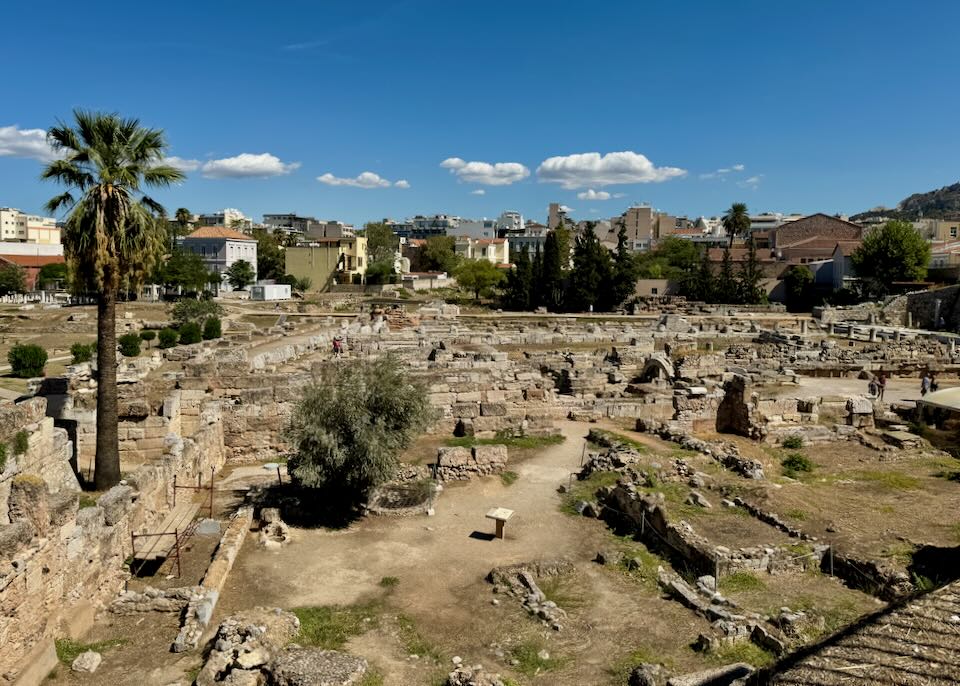
Perhaps because it lies on the outskirts of the ancient city center and a bit removed from pedestrian traffic, Kerameikos is often overlooked and rarely crowded. These photos were taken in late morning in mid-September.
Read More
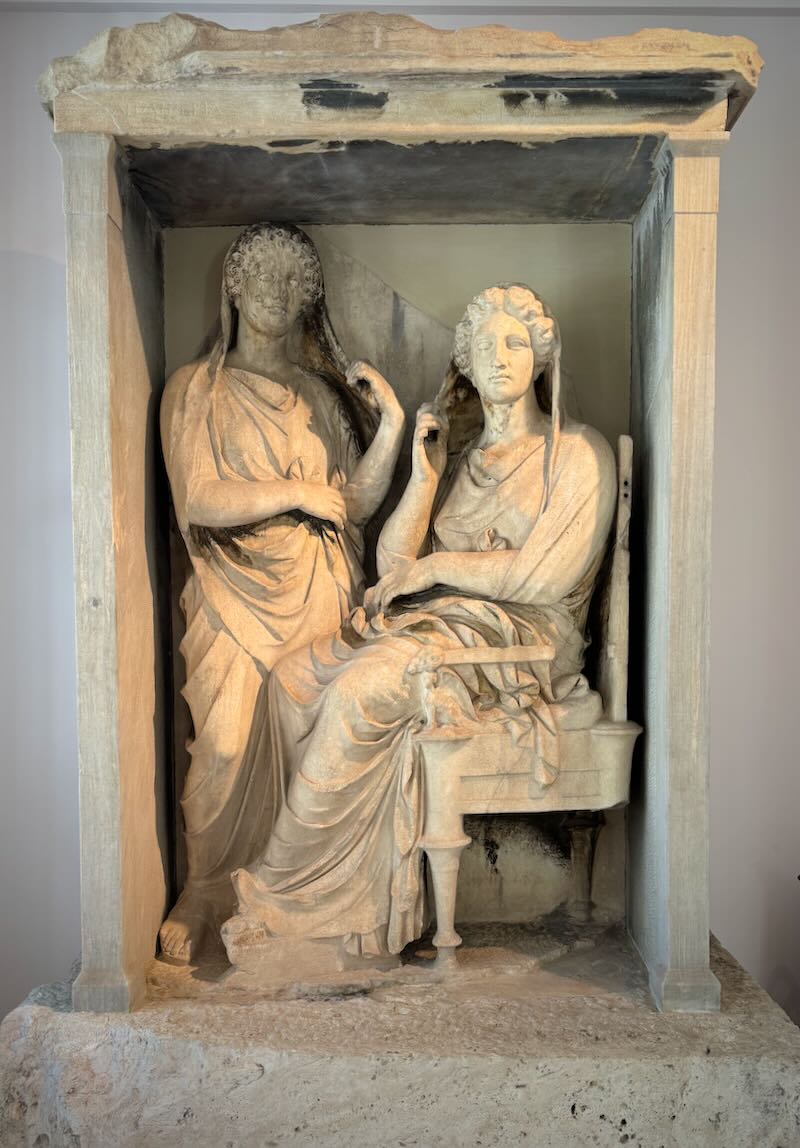
About Santorini Dave